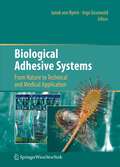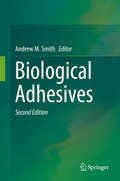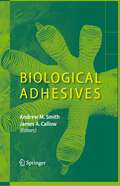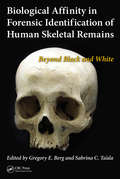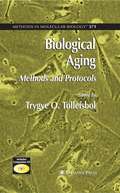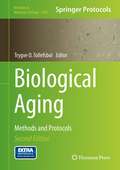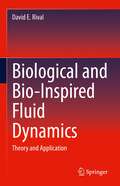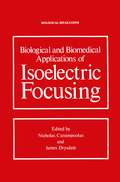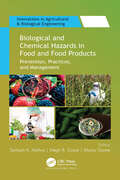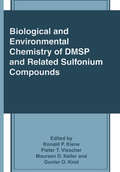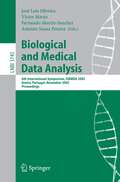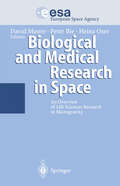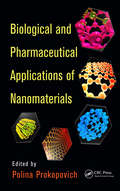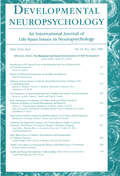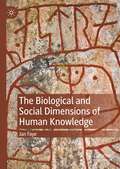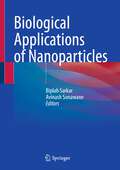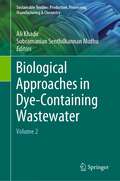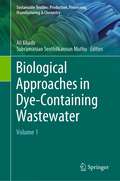- Table View
- List View
Biological Adhesive Systems: From Nature to Technical and Medical Application
by Janek Byern Ingo GrunwaldJ. Herbert Waite Like many graduate students before and after me I was There are so many species about which nothing is known, mesmerized by a proposition expressed years earlier by and the curse of not knowing is apathy. Krogh (1929) – namely that “for many problems there is Bioadhesion is the adaptation featured in this book, an animal on which it can be most conveniently studied”. and biology has many adhesive practitioners. Indeed, This opinion became known as the August Krogh Prin- every living organism is adhesively assembled in the ciple and remains much discussed to this day, particu- most exquisite way. Clearly, speci? c adhesion needs to larly among comparative physiologists (Krebs, 1975). be distinguished from the opportunistic variety. I think The words “problems” and “animal” are key because of speci? c adhesion as the adhesion between cells in the they highlight the two fundamental and complementary same tissue, whereas opportunistic adhesion might be the foci of biological research: (1) expertise about an animal adhesion between pathogenic microbes and the urinary (zoo-centric), which is mostly observational and (2) a tract, or between a slug and the garden path. If oppor- mechanistic analysis of some problem in the animal’s life nistic bioadhesion is our theme, then there are still many history or physiology (problem-centric), which is usually practitioners but the subset is somewhat more select than a hypothesis-driven investigation. before.
Biological Adhesives
by Andrew M. SmithMany creatures use adhesive polymers and structures to attach to inert substrates, to each other, or to other organisms. This is the first major review that brings together research on many of the well-known biological adhesives dealing with bacteria, fungi, algae, and marine and terrestrial animals. As we learn more about their molecular and mechanical properties we begin to understand why they adhere so well and with this comes broad applications in areas such as medicine, dentistry, and biotechnology.
Biological Adhesives
by Andrew M. Smith James A. CallowMany creatures use adhesive polymers and structures to attach to inert substrates, to each other, or to other organisms. This is the first major review that brings together research on many of the well-known biological adhesives dealing with bacteria, fungi, algae, and marine and terrestrial animals. As we learn more about their molecular and mechanical properties we begin to understand why they adhere so well and with this comes broad applications in areas such as medicine, dentistry, and biotechnology.
Biological Affinity in Forensic Identification of Human Skeletal Remains: Beyond Black and White
by Gregory E. Berg Sabrina C Ta'AlaAncestry determination in the identification of unknown remains can be a challenge for forensic scientists and anthropologists, especially when the remains available for testing are limited. There are various techniques for the assessment of ancestry, ranging from traditional to new microbiological and computer-assisted methods. Biological Affinity
Biological Aging: Methods and Protocols (Methods in Molecular Biology #371)
by Trygve O. TollefsbolThis book investigates the various processes that are affected by the age of an organism. Several new tools for the analysis of biological aging have been introduced recently, and this volume provides methods and protocols for these new techniques in addition to its coverage of established procedures. Researchers seeking new technology and techniques will find this volume of tremendous benefit as they move towards new directions.
Biological Aging: Methods and Protocols (Methods in Molecular Biology #1048)
by Trygve O. TollefsbolThe second edition of Biological Aging: Methods and Protocols expands upon the previous edition with current, detailed, useful and promising methods currently available to study aging. With new chapters on protocols that detail aging cell culture as well as many more contemporary approaches such as nuclear transfer, microarray and proteomics technologies. Written in the highly successful Methods in Molecular Biology series format, chapters include introductions to their respective topics, lists of the necessary materials and reagents, step-by-step, readily reproducible laboratory protocols, and key tips on troubleshooting and avoiding known pitfalls. Authoritative and practical, Biological Aging: Methods and Protocols, Second Edition details the most recent breakthroughs in technology that have served to advance the study of aging.
Biological and Bio-Inspired Fluid Dynamics: Theory and Application
by David E. RivalThis text provides the reader with tools necessary to study biological and bio-inspired flows, all the while developing an appreciation for their evolutionary and engineering constraints. It is suitable for students already exposed to introductory concepts in fluid mechanics and applied mechanics as a whole, but who would not need an advanced training in fluid mechanics per se. Currently no textbook exists that can take students from an introductory position in fluid mechanics to these contemporary topics of interest. The book is ideal for upper-level undergraduates and graduate students studying a range of engineering domains as well as biology, or even medicine.
Biological and Biomedical Applications of Isoelectric Focusing (Biological Separations)
by Nicholas CatsimpoolasBiological and Chemical Hazards in Food and Food Products: Prevention, Practices, and Management (Innovations in Agricultural & Biological Engineering)
by Santosh K. Mishra Megh R. Goyal Manju GaareThis volume takes an in-depth look at various biological and chemical hazards in food and food products that pose health threats. It also outlines methods and practices for the diagnosis, prevention, and management of these hazards in food production processes. The new scientific research and case studies presented in the volume cover mycotoxins, foodborne pathogens, antibiotic residues from dairy animals, pesticide residues, the presence of heavy metals in food, and more. Chapters also address food allergy management and offer lessons and practices in food recall situations. The authors discuss the various food toxins, their sources, as well as management, mitigation, and prevention strategies. Also addressed are the specific adverse effects on people with health problems such as diabetes, hypertension, cancer, neurodegenerative diseases, and more. This book is organized in such a way that each chapter treats one major food safety hazard and offers novel control methods for health, food safety, and quality enhancement through various means. Biological and Chemical Hazards in Food and Food Products: Prevention, Practices, and Management will aid researchers and policymakers as it illustrates the various aspects of food safety hazards and how to analyze and control these potential health threats.
Biological and Chemical Hazards in Food and Food Products: Prevention, Practices, and Management (Innovations in Agricultural & Biological Engineering)
by Santosh K. Mishra, Megh R. Goyal and Manju GaareThis volume takes an in-depth look at various biological and chemical hazards in food and food products that pose health threats. It also outlines methods and practices for the diagnosis, prevention, and management of these hazards in food production processes. The new scientific research and case studies presented in the volume cover mycotoxins, foodborne pathogens, antibiotic residues from dairy animals, pesticide residues, the presence of heavy metals in food, and more. Chapters also address food allergy management and offer lessons and practices in food recall situations. The authors discuss the various food toxins, their sources, as well as management, mitigation, and prevention strategies. Also addressed are the specific adverse effects on people with health problems such as diabetes, hypertension, cancer, neurodegenerative diseases, and more. This book is organized in such a way that each chapter treats one major food safety hazard and offers novel control methods for health, food safety, and quality enhancement through various means. Biological and Chemical Hazards in Food and Food Products: Prevention, Practices, and Management will aid researchers and policymakers as it illustrates the various aspects of food safety hazards and how to analyze and control these potential health threats.
Biological and Environmental Chemistry of DMSP and Related Sulfonium Compounds
by Keller R. P. Kiene G. O. Kirst P. T. Visscher''An essential book for people working in the area of sulfur compounds in the environment and should be in all institutional libraries....Well indexed, well presented.'' --- SGM Quarterly, November 1997 ''Extremely useful and well-produced symposium volume that should be of interest to many environmental scientists, microbial and plant physiologists, and aquatic ecologists.'' The Quarterly Review of Biology, June 1998
Biological and Medical Data Analysis: 6th International Symposium, ISBMDA 2005, Aveiro, Portugal, November 10-11, 2005, Proceedings (Lecture Notes in Computer Science #3745)
by José Luis Oliveira Víctor Maojo Fernando Martin-Sanchez António Sousa PereiraBiological and Medical Research in Space: An Overview of Life Sciences Research in Microgravity
by David Moore Peter Bie Heinz OserLife Science studies in space were initially driven by the need to explore how man could survive spaceflight conditions; the effects of being launched un der high accelerations, exposed to weightlessness and radiation for different periods of time, and returned to Earth in safety. In order to substantiate the detailed knowledge of potentially adverse effects, many model experiments were launched using organisms which ranged from bacteria, plants, inverte brates, rodents and primates through to man. Although no immediate life threatening effects were found, these experiments can be considered today as the precursors to life science research in space. Many unexplained effects on these life forms were attributed to the condition of weightlessness. Most of them were poorly recorded, poorly published, or left simply with anecdotal information. Only with the advent of Skylab, and later Spacelab, did the idea emerge, and indeed the infrastructure permit, weightlessness to be considered as an ex tended tool for research into some fundamental mechanisms or processes as sociated with the effect of gravity on organisms at all levels. The initial hy pothesis to extrapolate from hypergravity through 1 x g to near 0 x g effects could no longer be retained, since many of the experiment results were seen to contradict the models or theories in the current textbooks of biology and physiology. The past decade has been dedicated primarily to exploratory research.
Biological and Pharmaceutical Applications of Nanomaterials
by Polina ProkopovichBiological and Pharmaceutical Applications of Nanomaterials presents the findings of cutting-edge research activities in the field of nanomaterials, with a particular emphasis on biological and pharmaceutical applications. Divided into four sections-nanomaterials for drug delivery, antimicrobial nanomaterials, nanomaterials in biosensors, and safet
Biological and Pharmacological Properties of the Genus Moringa
by J. Basilio HerediaThere is an increasing interest in plants of the Moringa genus used as a source of phytochemicals with biopharmaceutical potential, as a functional ingredient in many products and as an additive in poultry feeding stocks. Biological and Pharmacological Properties of the Genus Moringa is the first publication to comprehensively assess the latest research on Moringa studies. This book reviews recent studies covering the botanical, agronomical, genomic, biotechnological, and ethnopharmacological aspects. It presents specialized work in a user-friendly way that will appeal to undergraduates, graduates and researchers primarily in ethnopharmacology, functional foods and with a linkage to veterinary treatments. Key Features: Describes the ethnopharmacological and ethnobotanical use of plants from all Moringa species Presents recent information that will be helpful for the future development of biopharmaceuticals Reviews the phytochemical content from all Moringa species Assesses the potential of all Moringa species as a functional ingredient
Biological and Pharmacological Properties of the Genus Moringa
by J. Basilio Heredia Erick P. Gutierrez-GrijalvaThere is an increasing interest in plants of the Moringa genus used as a source of phytochemicals with biopharmaceutical potential, as a functional ingredient in many products and as an additive in poultry feeding stocks. Biological and Pharmacological Properties of the Genus Moringa is the first publication to comprehensively assess the latest research on Moringa studies. This book reviews recent studies covering the botanical, agronomical, genomic, biotechnological, and ethnopharmacological aspects. It presents specialized work in a user-friendly way that will appeal to undergraduates, graduates and researchers primarily in ethnopharmacology, functional foods and with a linkage to veterinary treatments. Key Features: Describes the ethnopharmacological and ethnobotanical use of plants from all Moringa species Presents recent information that will be helpful for the future development of biopharmaceuticals Reviews the phytochemical content from all Moringa species Assesses the potential of all Moringa species as a functional ingredient
The Biological and Social Determinants of Child Development: A Special Double Issue of developmental Neuropsychology
by Steven M. LeharThe Biological and Social Determinants of Child Development stimulates cross-disciplinary communication and research collaboration in the field of child development. While the papers in this issue seem diverse in terms of topic and discipline, there are a number of common themes: *critical period for brain development and the importance of specific environmental input during this period; *importance of early brain development and enriched environments is supported in articles describing findings from human studies; *potential for brain plasticity following specialized retraining is found in a compelling paper demonstrating different profiles of brain activation for normal readers vs. those who have dyslexia and younger children at high risk for development of reading disabilities; and *critical period, brain plasticity, and parallel changes in developing behavior and brain structure and functioning. As a number of papers in this issue describe potential interventions, one is relevant because it describes the numerous factors that make results of such studies have the potential to generalize to larger populations. Putting the described papers in a broad perspective, the last article argues that we cannot understand the health status of a society without understanding the health-determining influences across the life course.
The Biological and Social Determinants of Child Development: A Special Double Issue of developmental Neuropsychology
by Steven M. LeharThe Biological and Social Determinants of Child Development stimulates cross-disciplinary communication and research collaboration in the field of child development. While the papers in this issue seem diverse in terms of topic and discipline, there are a number of common themes: *critical period for brain development and the importance of specific environmental input during this period; *importance of early brain development and enriched environments is supported in articles describing findings from human studies; *potential for brain plasticity following specialized retraining is found in a compelling paper demonstrating different profiles of brain activation for normal readers vs. those who have dyslexia and younger children at high risk for development of reading disabilities; and *critical period, brain plasticity, and parallel changes in developing behavior and brain structure and functioning. As a number of papers in this issue describe potential interventions, one is relevant because it describes the numerous factors that make results of such studies have the potential to generalize to larger populations. Putting the described papers in a broad perspective, the last article argues that we cannot understand the health status of a society without understanding the health-determining influences across the life course.
The Biological and Social Dimensions of Human Knowledge
by Jan FayeTraditionally, philosophers have argued that epistemology is a normative discipline and therefore occupied with an a priori analysis of the necessary and sufficient conditions that a belief must fulfill to be acceptable as knowledge. But such an approach makes sense only if human knowledge has some normative features, which conceptual analysis is able to disclose. As it turns out, philosophers have not been able to find such features unless they are very selective in their choice of examples of knowledge. Much of what we intuitively think functions as knowledge, both in human and non-human animals, does not share these normative features.The purpose of this book is to demonstrate that natural selection has adapted human sense impressions to deliver reliable information without meeting the traditional commitments for having knowledge. In connection with memory, sensory and bodily information provides an animal with experiential knowledge. Experiential knowledge helps an animal to navigate its environment. Moreover, experiential knowledge has different functions depending on whether the deliverance of information stems from the organism’s external or internal senses.
Biological and Synthetic Polymer Networks
by O. KramerBiological and Synthetic Polymer Networks contains 36 papers selected from the papers presented at NETWORKS 86, the 8th Polymer Networks Group Meeting. NETWORKS 86 was held in Elsinore, Denmark, on 31 August 5 September 1986. A total of nine invited main lectures and 68 contributed papers were presented at the meeting. A wide range of important biological and synthetic materials consist of three-dimensional polymer networks. The properties range from very stiff structural materials to extremely flexible rubbery materials and gels. Most polymer networks are permanent networks held together by covalent bonds. Such networks are insoluble but they may swell considerably in good solvents. Polymer networks held together by ionic bonds, hydrogen bonds or so-called entanglements are of a more temporary nature. At long times they exhibit a tendency to flow, and they are soluble in good solvents. The paper by Professor Walther Burchard and his co-workers, 'Covalent, Thermoreversible and Entangled Networks: An Attempt at Comparison', serves as a general introduction to polymer networks. The book contains both theoretical and experimental papers on the formation, characterisation and properties of polymer networks. Two topics were given special sessions at the meeting, namely Biological Networks and Swelling of Polymer Networks.
Biological Applications of Nanoparticles
by Biplab Sarkar Avinash SonawaneThis textbook for graduate and postgraduate students provides comprehensive applications of nanoparticles in medicine, agriculture, and environmental sciences. The initial chapter covers basic topics related to types, synthesis, structure, and properties of various nanoparticles. It further discusses the wide range of applications of nanoparticles in medicine, agriculture, and the environment. The book presents nano-electronic biosensors that are used to diagnose and monitor the progression of human diseases. It summarizes the opportunities and challenges of nanotechnology in the agriculture and food sector highlighting the scientific, technical, regulatory, safety, and societal impacts. Additionally, it illustrates the applications of nanotechnology in the field of aquaculture medicine, bioinformatics and food technology. The textbook examines the development and administration of nano-medicines , their applications, advantages, and limitations for the treatment and prophylaxis of a broad range of diseases. Lastly, the textbook explores the recent advances in the field of nanobusiness and nanotechnology issues in intellectual property management( IPR).
Biological Approaches in Dye-Containing Wastewater: Volume 2 (Sustainable Textiles: Production, Processing, Manufacturing & Chemistry)
by Ali Khadir Subramanian Senthilkannan MuthuThis Volume 2 contains essential contributions highlighting the use of biotechnology in dye removal. It begins with an overview of activated sludge process for dye removal along with its limitation is carried out and describes the fundamental concepts of dye-containing textile wastewater treatments, particularly microbial and enzymatic approaches, including the most usual textile wastewater treatments and their trends. It discusses the role microbial biofilms play when employed in the integrated treatment system for effective detoxification, degradation and complete mineralization of pollutants in dye waste effluents. It assesses the most recent advances in the biotransformation of synthetic dyes from wastewater, especially anthraquinone-typed dyes. Phycoremediation as an emerging and efficient technology in dye removal, remediation strategies used by microalgae, and the role of fungi in the dye removal are presented.
Biological Approaches in Dye-Containing Wastewater: Volume 1 (Sustainable Textiles: Production, Processing, Manufacturing & Chemistry)
by Ali Khadir Subramanian Senthilkannan MuthuThe textile industry segment has been continuously expanding and it is reported that the global market was US$1000 billion in 2020. Aside from the fact that textile industry could be profitable and offers several advantages for human life, this industry produces wastewater containing many harmful substances in the form of organic and inorganic moieties. Textile wastewater can lead to serious environmental problems if discharged without treatment. In this first volume of the application of biological mechanisms, processes and units are reviewed in terms of dye degradation and removal. The role of biodegradation, bioaccumulation and biosorption in bio-decolorization are discussed. The book starts with highlighting the fundamentals of aerobic and anaerobic mechanisms having different configurations. The moving bed bioreactor (MBBR), up-flow anaerobic sludge blanket reactors, sequential aerobic/anaerobic batch reactors, membrane bioreactor, etc are also covered in this edition.
Biological Approaches to Rational Drug Design
by David B. Weiner William V. WilliamsThis book exploits an understanding of disease pathogenesis by applying a variety of biological agents to therapy. It provides a broad overview of the current methodologies being applied to biological approaches to rational drug design and in depth analyses of progress in this specific field.
Biological Approaches to Rational Drug Design
by David B. Weiner William V. WilliamsThis book exploits an understanding of disease pathogenesis by applying a variety of biological agents to therapy. It provides a broad overview of the current methodologies being applied to biological approaches to rational drug design and in depth analyses of progress in this specific field.
